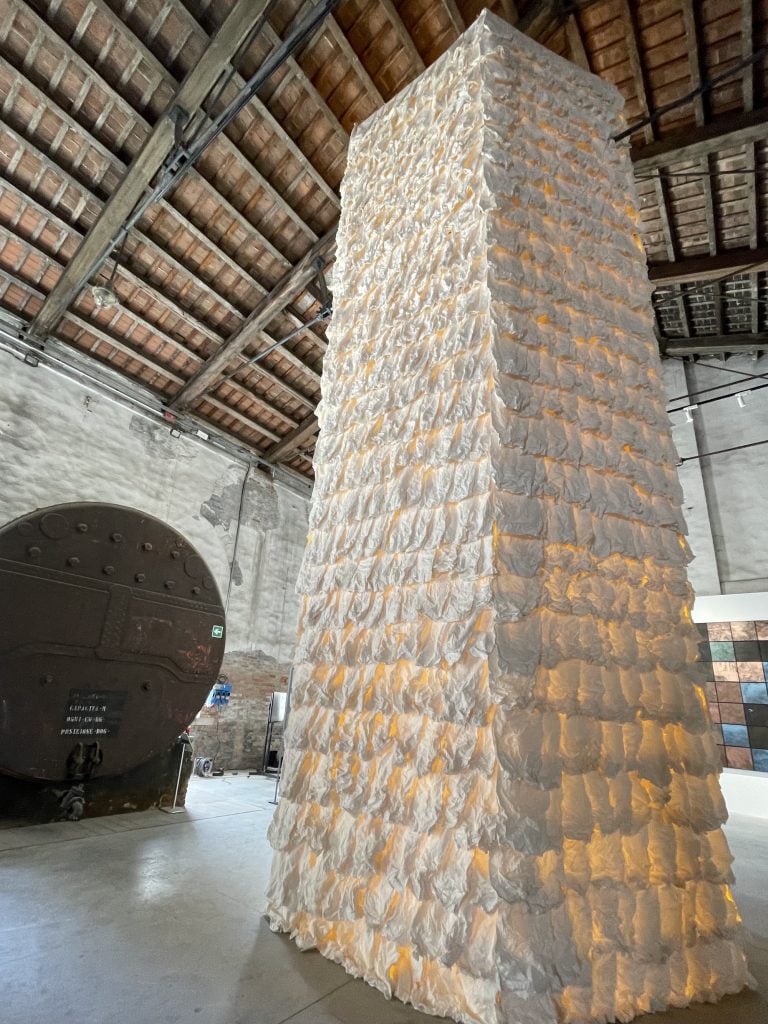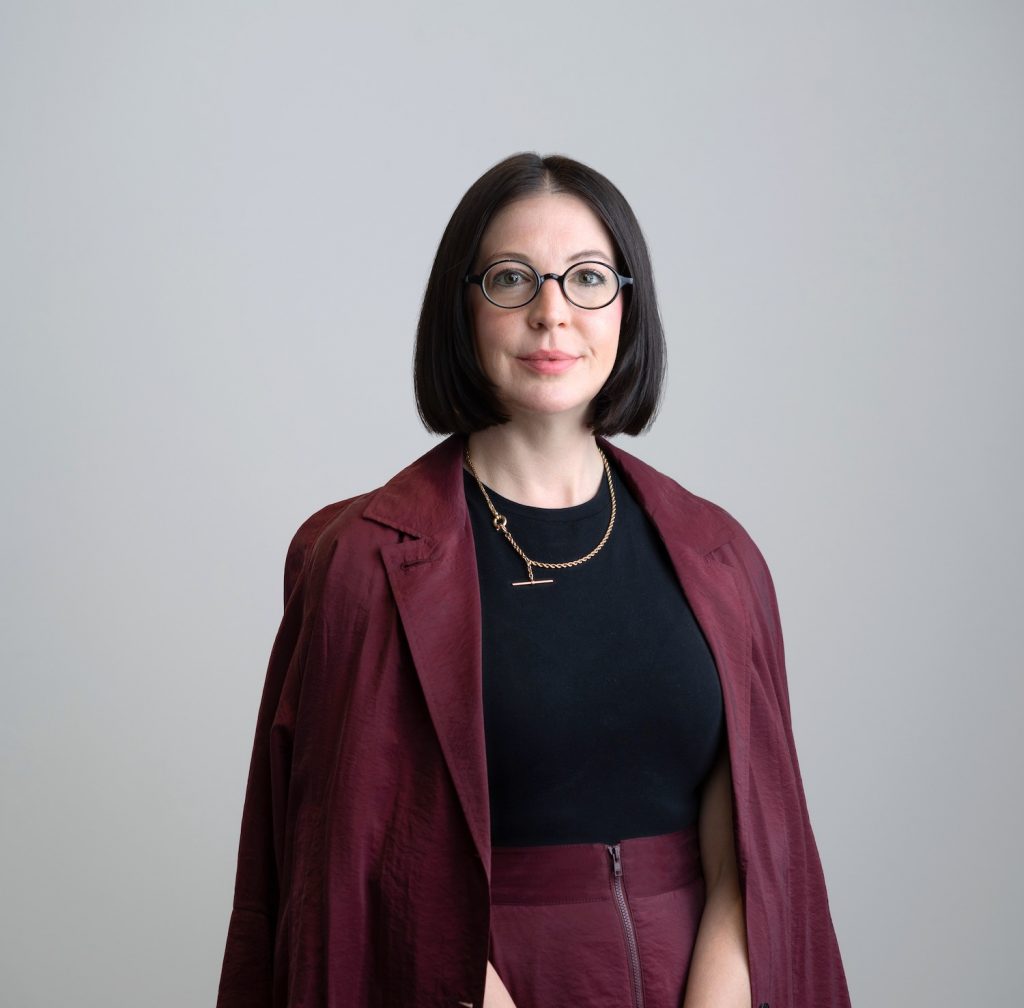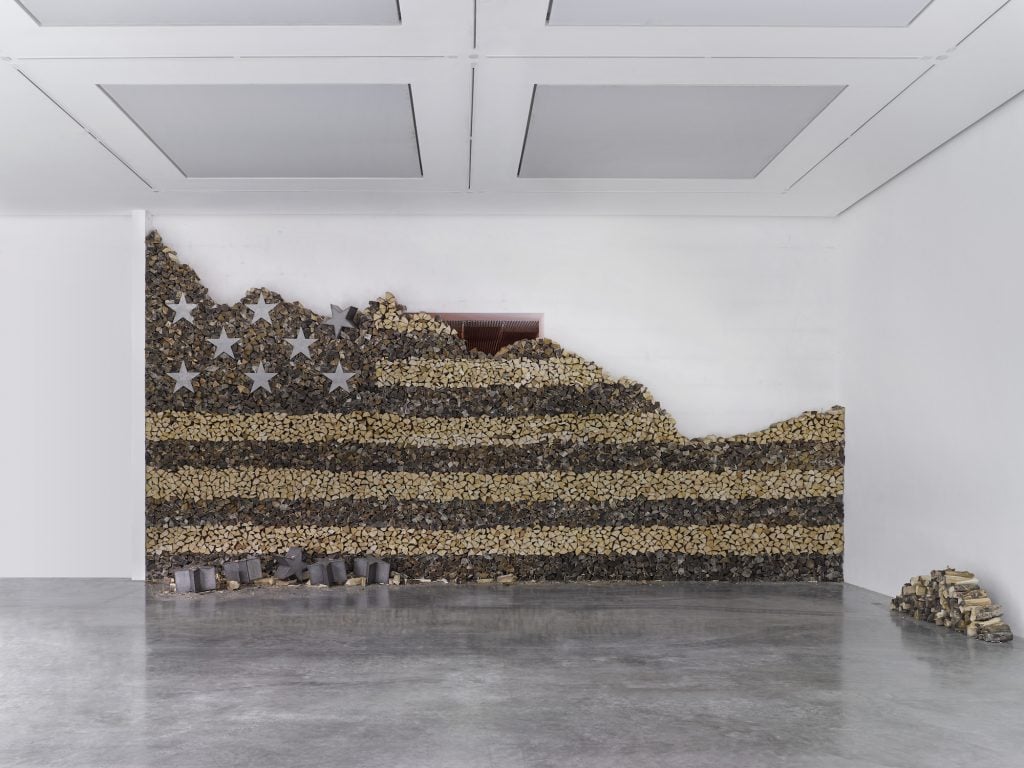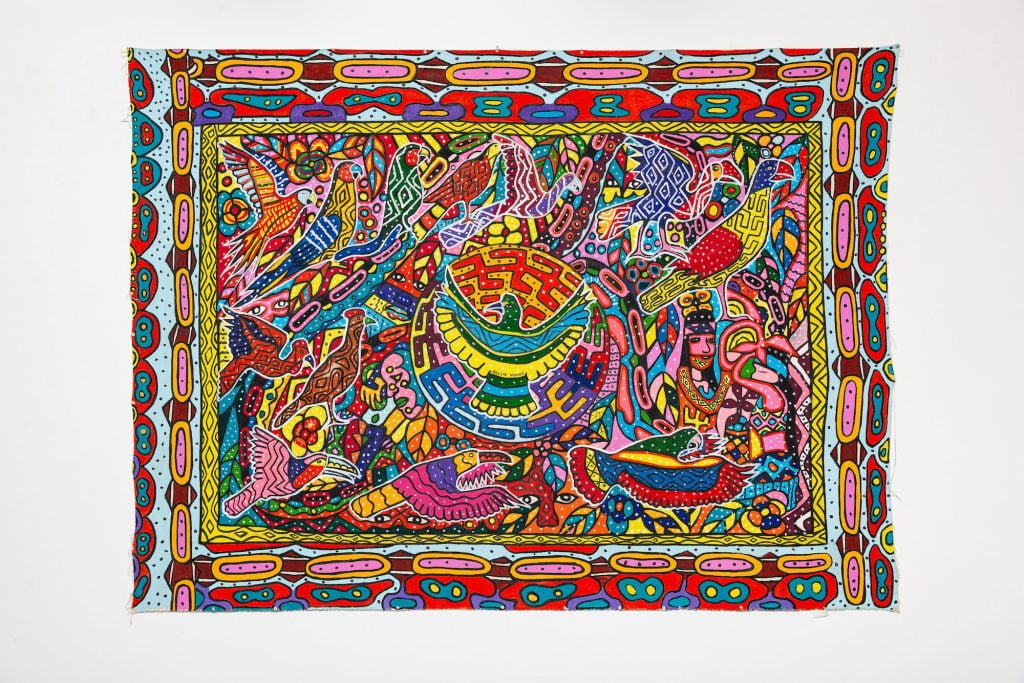Art Fairs
At 2024 Art Basel Miami Beach, Giant-Sized Works Take Center Stage
The event's layout will feature 'subtle refinements,' its director, Bridget Finn, said.

The event's layout will feature 'subtle refinements,' its director, Bridget Finn, said.

Eileen Kinsella

With roughly two months—and a bevy of other major art fairs to get through—before much of the art world descends on Miami for the annual Art Basel Miami Beach, its organizers announced details of its offerings today. They include some “subtle refinements” to the fair’s floor plan that director Bridget Finn believes will “have a huge impact on the way people navigate and utilize the show,” she said in a phone interview from Miami.
The fair, now in its 22nd year, will run from December 4 through 8 at the Miami Beach Convention Center; the first two days are for VIPs and invited guests. It will be the first edition completely put together under the leadership of Finn, a veteran dealer who was appointed in July 2023, after much of that year’s event was already finalized.

Bridget Finn, the director of Art Basel Miami Beach. Courtesy of Art Basel. Photo by Nick Hagen.
Perhaps the biggest change this time is the integration of the fair’s flashiest section, Meridians, which is devoted to large-scale works that do not fit easily (or at all) into traditional art fair booths.
When Meridians was first introduced, it was situated in a lounge on an upper floor of the Miami Beach Convention Center. Then it moved downstairs, where the fair is located, but it remained in a walled-off section. Now it will be in the middle of the action, alongside booths from more than 280 exhibitors.
“We decided to bring it across the show floor and situate it between Nova and Positions,” Finn said, referring to two other fair sectors. “We’re connecting a conversation that I think is really valuable to the strength of the show and emerging galleries.”

Danh Vo, Untitled (2020). © the artist. Photo © White Cube (Ollie Hammick)
Meridians also has a new curator: Yasmil Raymond, who was previously both the rector of the Städelschule and the director of the Portikus exhibition space in Frankfurt, Germany. Raymond succeeds Magalí Arriola, who had overseen the sector from the start. Raymond has selected 18 works, by artists like Alice Aycock, Rachel Feinstein, Danh Vo, Lee ShinJa, and Franz West.
In a presentation supported by White Cube, Vo is showing a massive untitled work comprised of stacked logs painted with an American flag. At a previous exhibition in Europe, it was accompanied by a wood-burning stove where logs were burned one at a time. “We will not be doing that” in the convention center, Finn said.

Mahku, Dau Shawa Peturi (2024). Image courtesy the artists and Carmo Johnson Projects.
A number of artists showing in the Venice Biennale will have work on hand, Finn noted. For instance, Meridians will include massive photosensitive scrolls of the Amazon rainforest by Roberto Huarcaya, who is representing Peru in the floating city. Also in that sector, Zhu Jinshi, who’s part of the Chinese delegation in Venice, is creating a tunnel-like structure out of folded paper that one person at a time can pass through—an installation about fragility and evolving sociocultural conditions.
In Positions, a sector for solo shows by young galleries, the MAHKU Collective (Movimento dos Artistas Huni Kuin), an Indigenous group from Brazil who is in La Biennale, will present paintings with Carmo Johnson Projects. The funds generated from their sale will go toward reclaiming land in the country. “It’s something you don’t often see in a commercial landscape,” Finn said.
Speaking of surprising sights: this year’s Miami Basel will feature more than 30 first-time exhibiting galleries, as was previously announced, with seven of those from Asia, including: Gallery Baton (Seoul), Pearl Lam Galleries (Shanghai), Leeahn (Deagu and Seoul), and Gallery Vacancy (Shanghai).